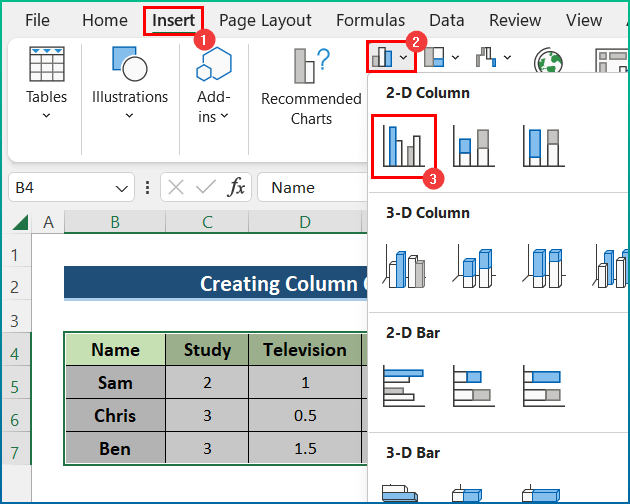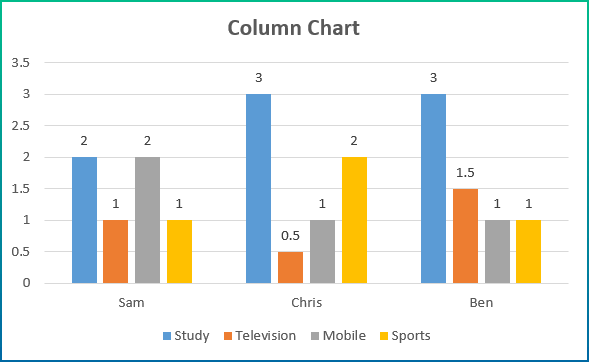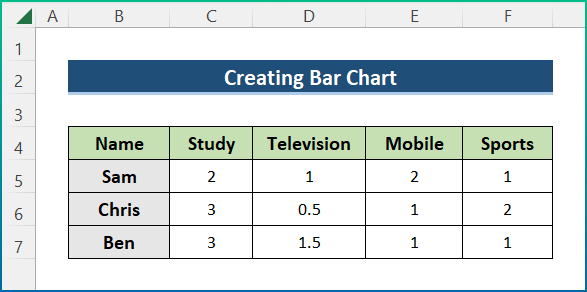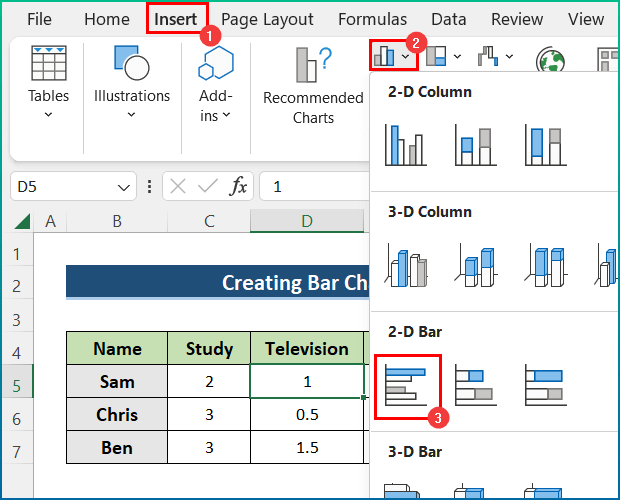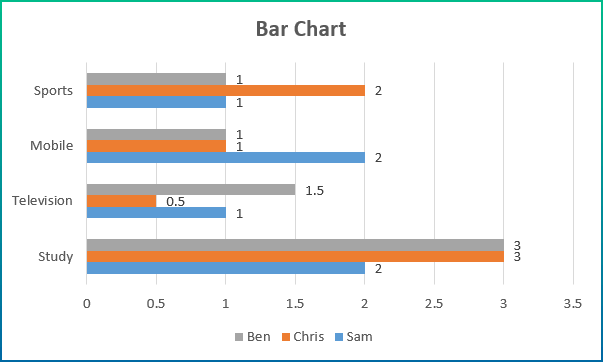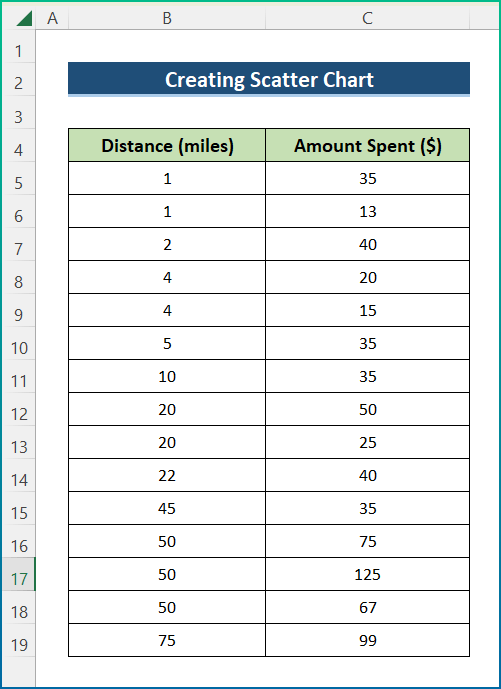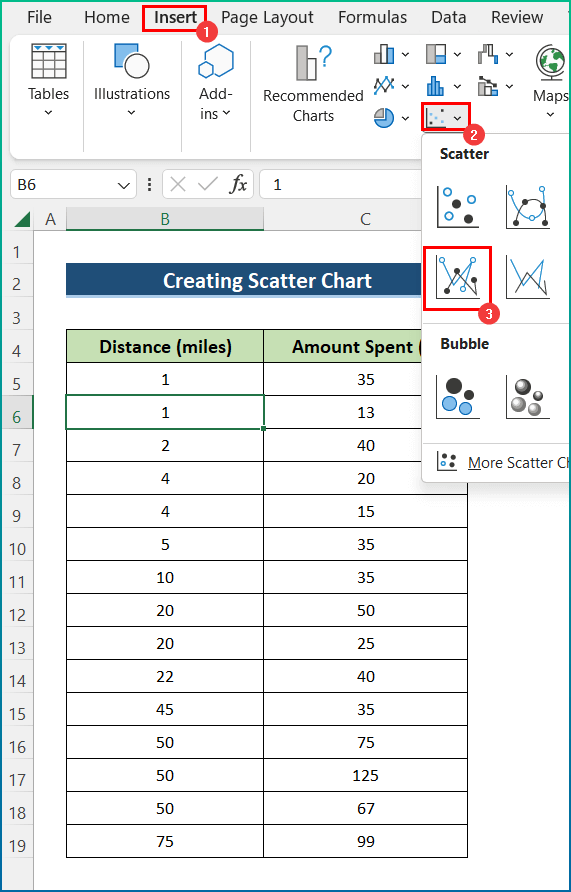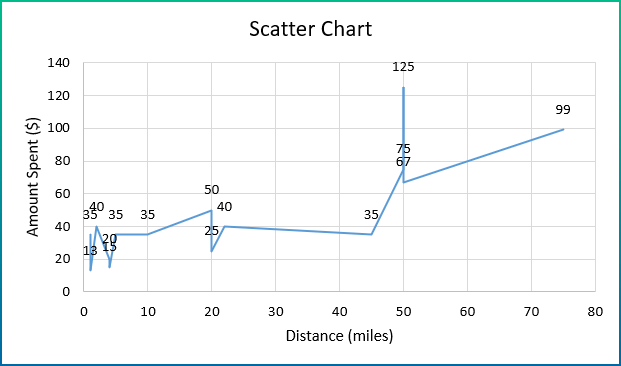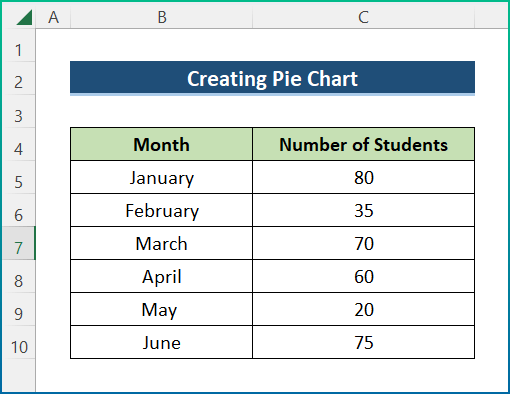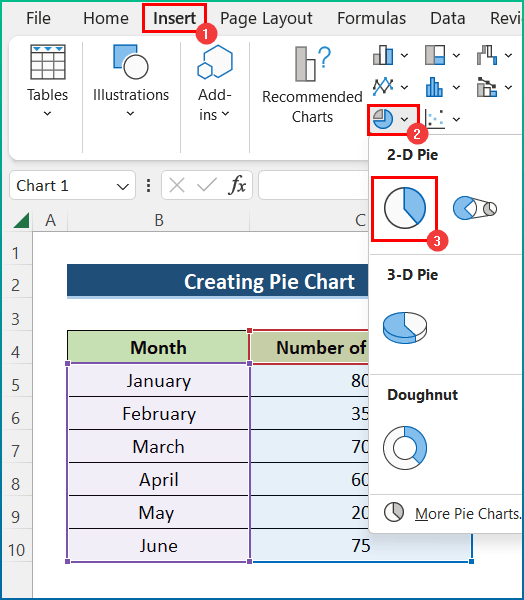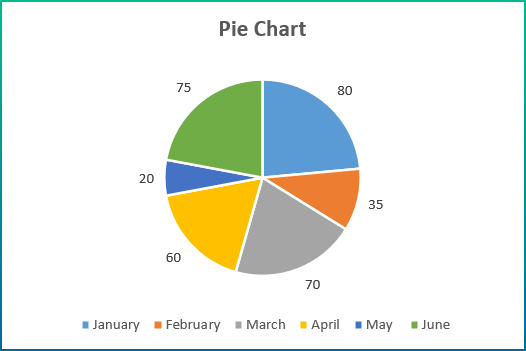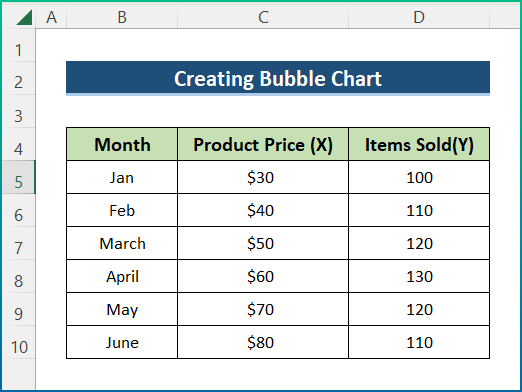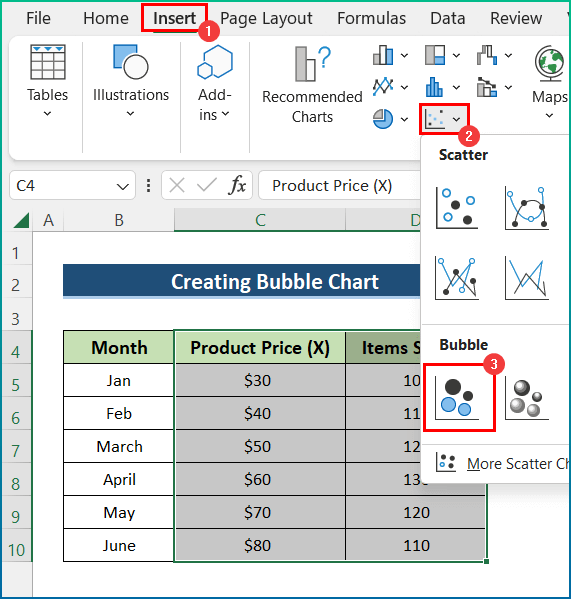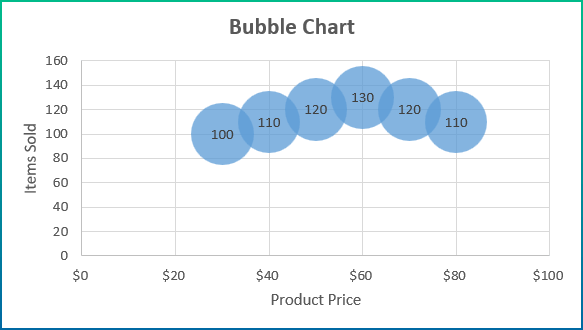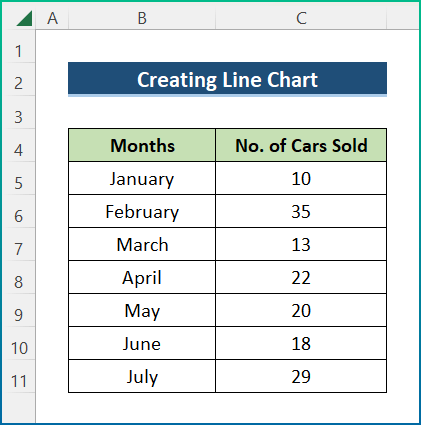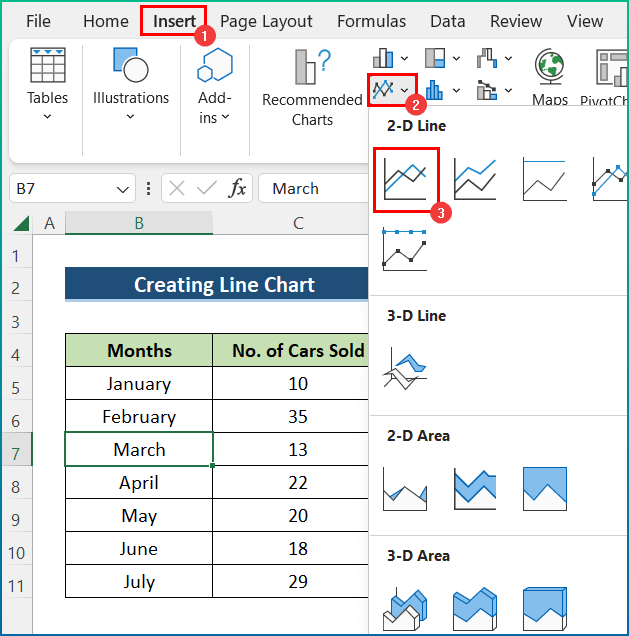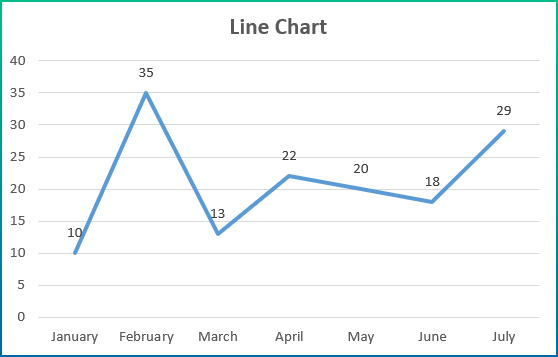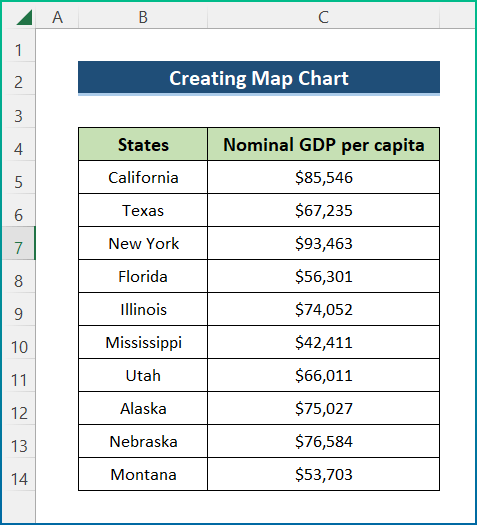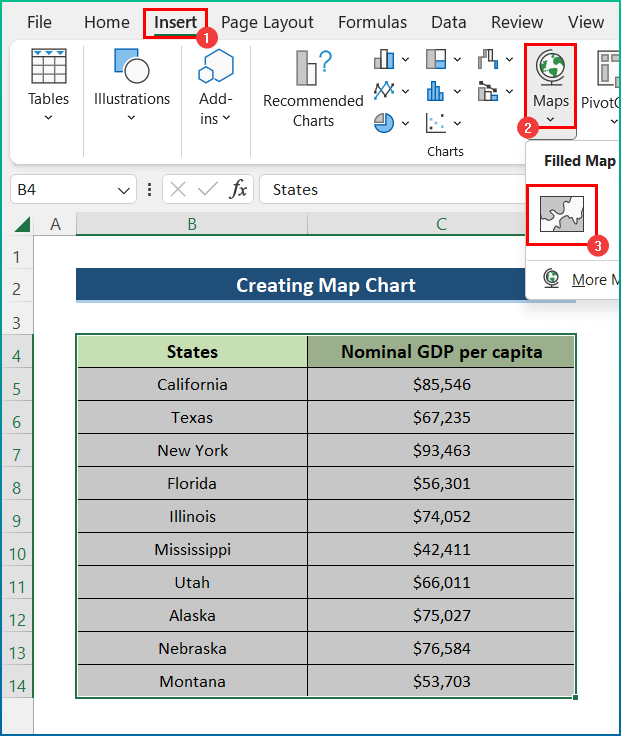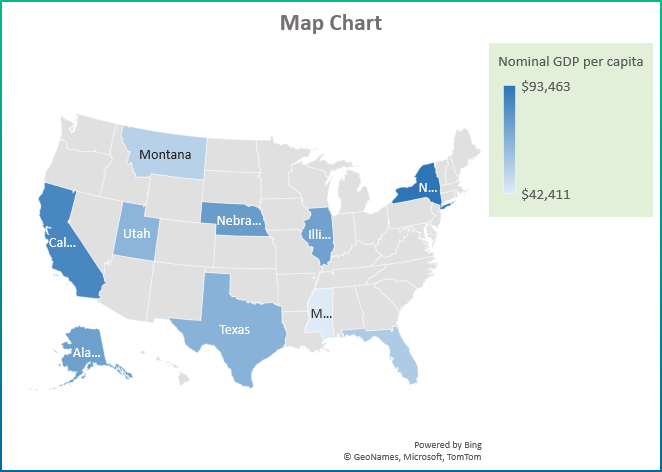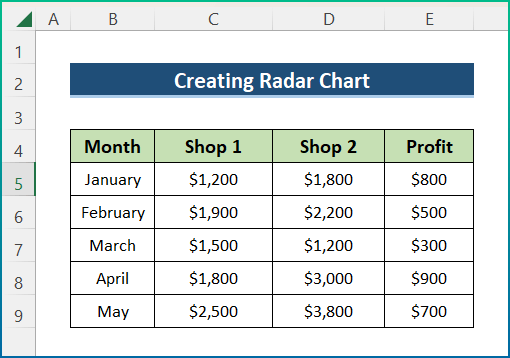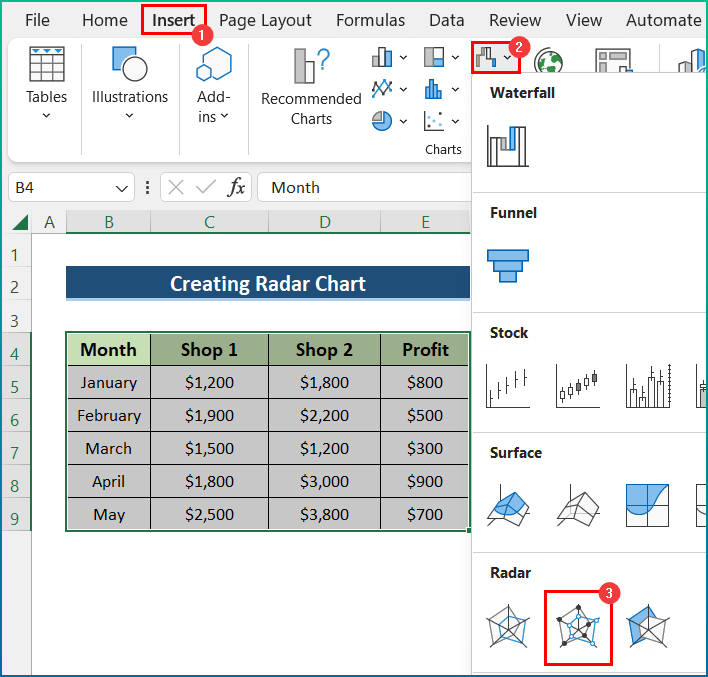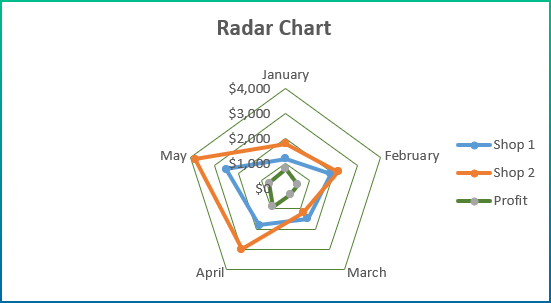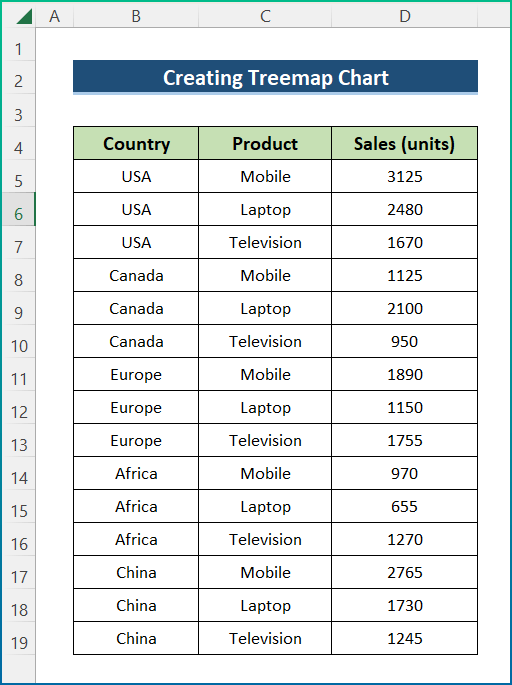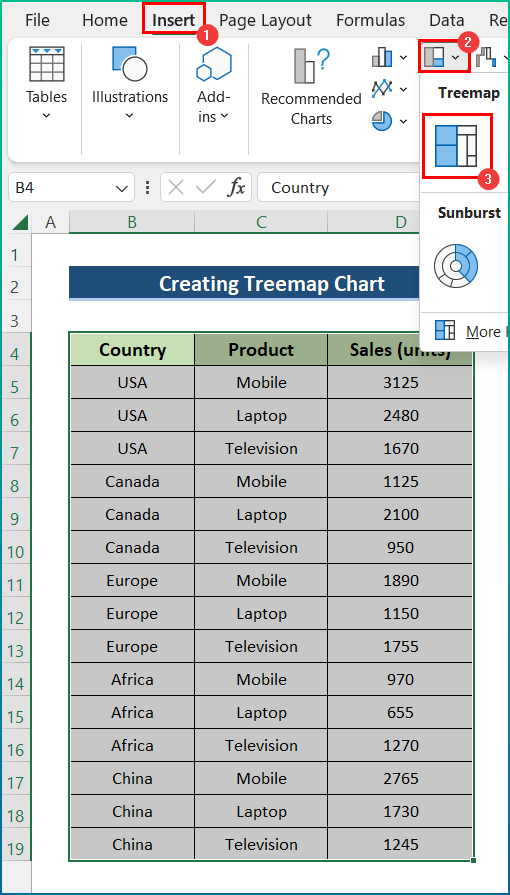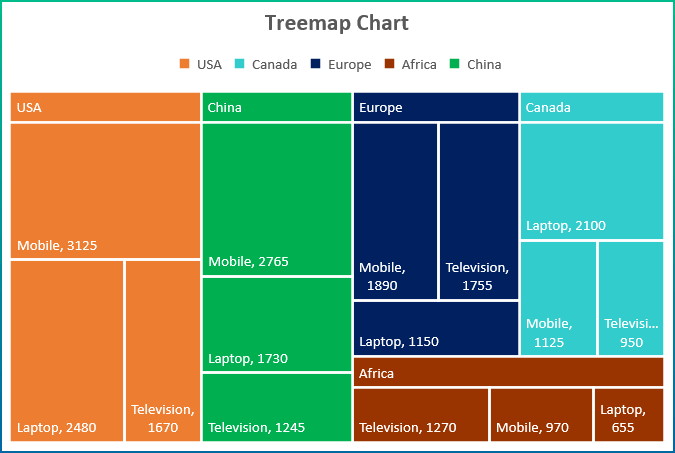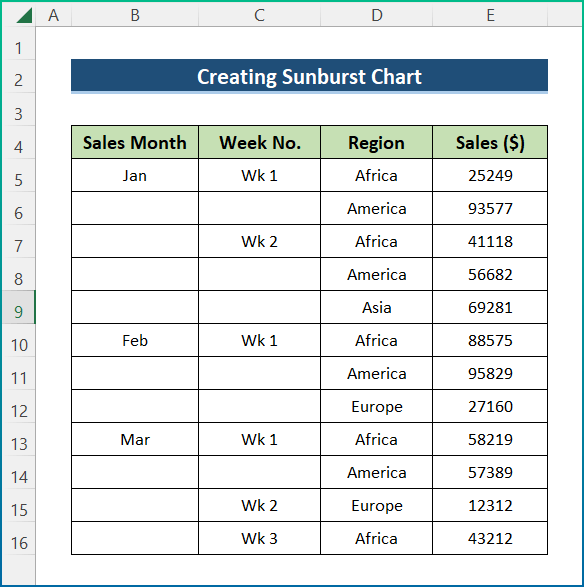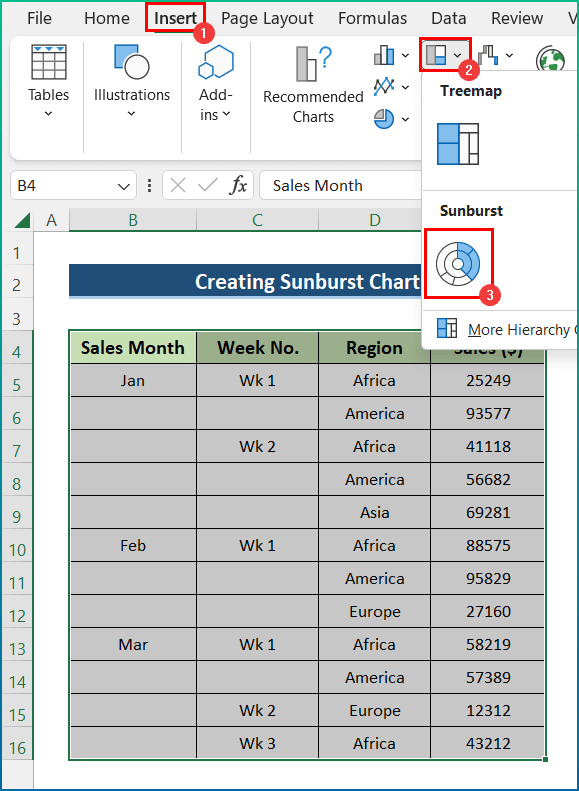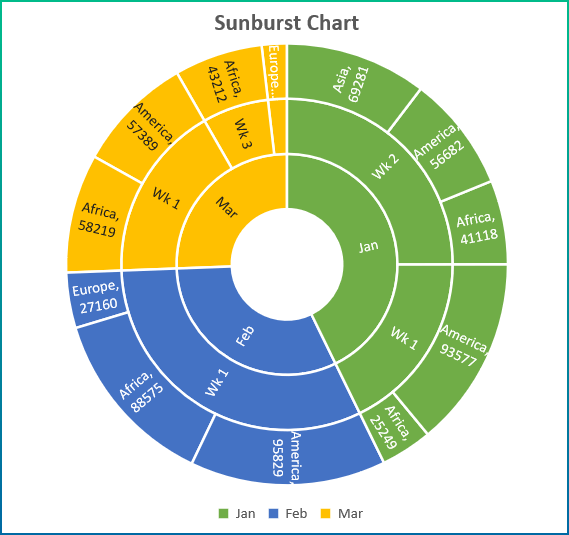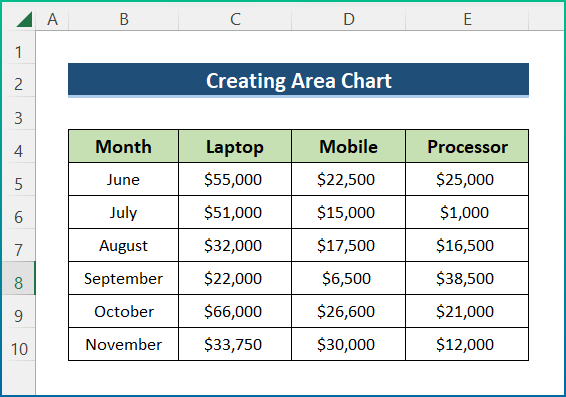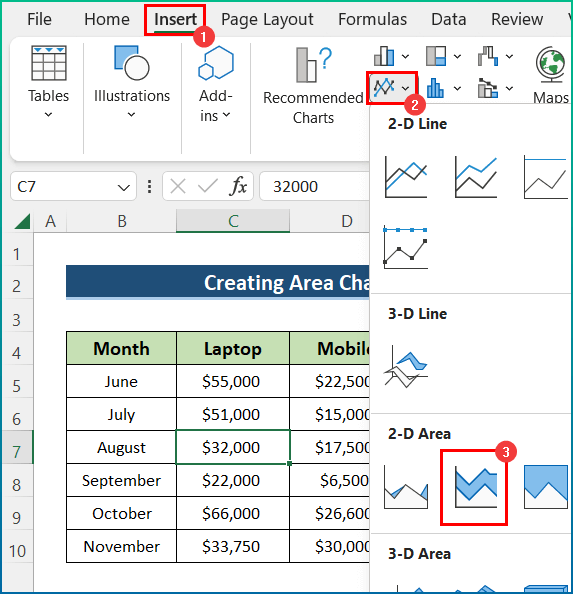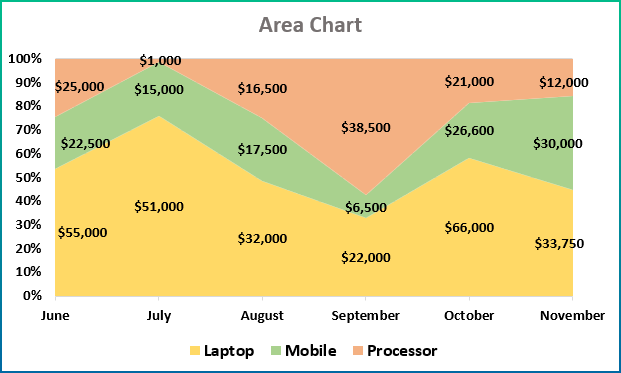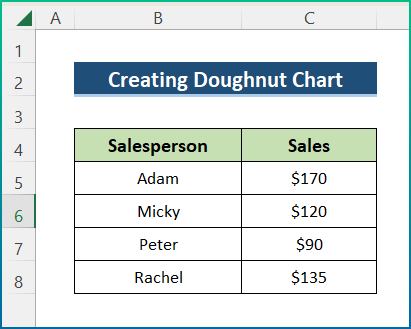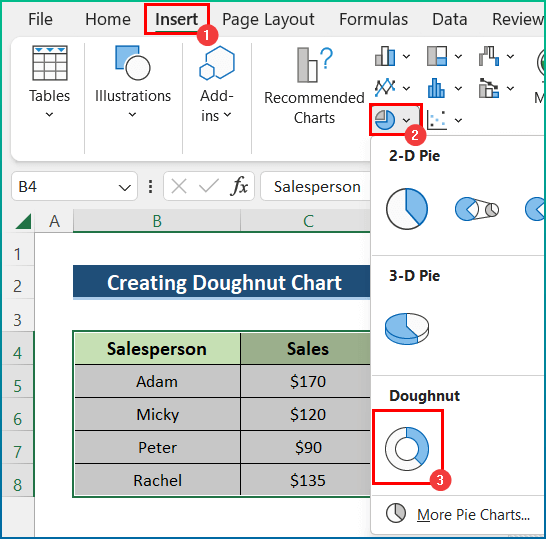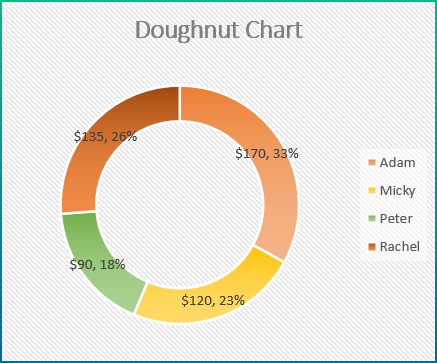Example 1 – Column Chart
2-D Column Charts are commonly used Excel charts. The sample dataset showcases 3 people’s leisure activities.
To create a chart:
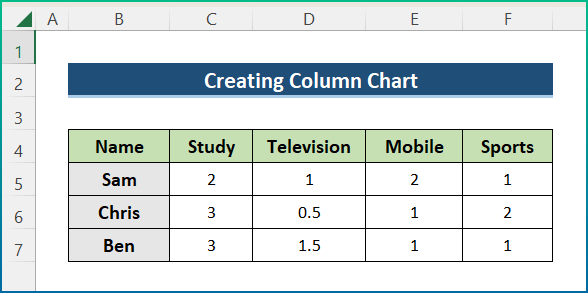
Steps:
- Select the entire dataset.
- Go to the Insert tab, and select Charts.
- Choose Column Chart.
- Select the first option in the 2-D Column.
- A column chart will be displayed. (The chart was formatted)
Example 2 – Bar Chart
Bar Charts are used to perform business analytics.
Create a bar chart in Excel.
Steps:
- Select a cell in the dataset.
- Go to the Insert tab, and select Charts.
- Choose Bar Chart.
- Select the first option in the 2-D Bar.
- A bar chart is displayed. (The chart was formatted)
Example 3 – Scatter Chart
Create a Scatter Chart for two variables.
A store owner wants to run a survey to find out whether customers live far or near the shop.
Steps:
- Select a cell in the dataset.
- Go to the Insert tab, and select Charts.
- In Charts, click Scatter (X, Y).
- Choose Scatter with Smooth Lines and Markers.
- A scatter chart is displayed. (The chart was formatted)
Example 4 – Pie Chart
A Pie Chart is made of slices that form a circular shaped graph to represent numerical data
The dataset Showcases the Number of Students over 6 Months in a particular subject.
Create a pie chart.
Steps:
- Select the data range. Here, B4:C11.
- Go to the Insert tab.
- Select Insert Pie or Doughnut Chart in Charts.
- Select a type of pie chart. Here, 2-D Pie.
- A pie chart is displayed. (The chart was formatted)
Example 5 – Bubble Chart
The Bubble Chart is a tool for three-dimensional data visualization. You may plot a third variable in addition to the standard x and y variables.
Here, the first two variables are represented by coordinates, whereas the third is shown by the bubble’s size.
Create the bubble chart for the following dataset.
Steps:
- Select C4:D10.
- Click the Insert tab and go to Scatter.
- Choose Bubble.
- The chart is displayed. (The chart was formatted)
Example 6 – Line Chart
Line Charts are commonly used for business analytics.
The sample dataset contains the No. of Cars Sold per Month. Create a line chart:
Steps:
- Select a cell in the dataset.
- Go to the Insert tab and select Charts.
- Choose 2-D Line Chart.
- The line chart is displayed. (The chart was formatted)
Example 7 – Map Chart
The geographic Map Chart is a useful visualization tool.
The dataset contains Nominal GDP per Capita for different States in the US. Create a map chart.
Steps:
- Select the entire dataset.
- Go to the Insert tab.
- In Charts, click Maps.
- Select Filled Map.
- A map chart will be displayed. (The chart was formatted)
Example 8 – Radar Chart
A Radar Chart, also known as a “Spider chart” or “Polar chart” helps to compare data of 3 or more than 3 variables correlative to a lead point.
The sample dataset showcases Month, Shop 1, Shop 2, and Profit columns. Create a Radar chart in Excel.
Steps:
- Select the entire data table.
- Go to the Insert tab.
- In Radar, select Radar with Markers.
- The Radar chart with markers is displayed. (The chart was formatted)
Example 9 – Treemap Chart
The Treemap Chart provides a hierarchical representation of data. Usually,
Create a Treemap Chart to show the sales value of various products:
Steps:
- Select the dataset.
- Go to the Insert tab and select Insert Treemap Chart.
- Click Treemap Chart.
- The Treemap Chart will be displayed. (The chart was formatted)
Example 10 – Sunburst Chart
The Sunburst Chart can publicize data charts with many details.
Create a Sunburst Chart for Employee percentages.
Steps:
- Select the dataset.
- Go to the Insert tab and select Insert Hierarchy Chart.
- Click Sunburst Chart.
- The sunburst chart is displayed. (The chart was formatted)
Example 11 – Area Chart
The Area chart is also used for business analytics.
This is the sample dataset. Create an Area Chart.
Steps:
- Select a cell in the dataset.
- Go to the Insert tab and choose Charts.
- Select 2-D Area Chart.
- The area chart is displayed. (The chart was formatted)
Example 12 – Doughnut Chart
Doughnut Charts usually represent data in each cell as a slice of a doughnut.
The dataset contains sales information. Create the chart.
Steps:
- Select the dataset.
- Go to the Insert tab.
- In Charts, select Doughnut Chart.
- The doughnut chart is displayed. (The chart was formatted)
Download Practice Workbook
Download the workbook.
<< Go Back to Data Visualisation in Excel | Learn Excel
Get FREE Advanced Excel Exercises with Solutions!